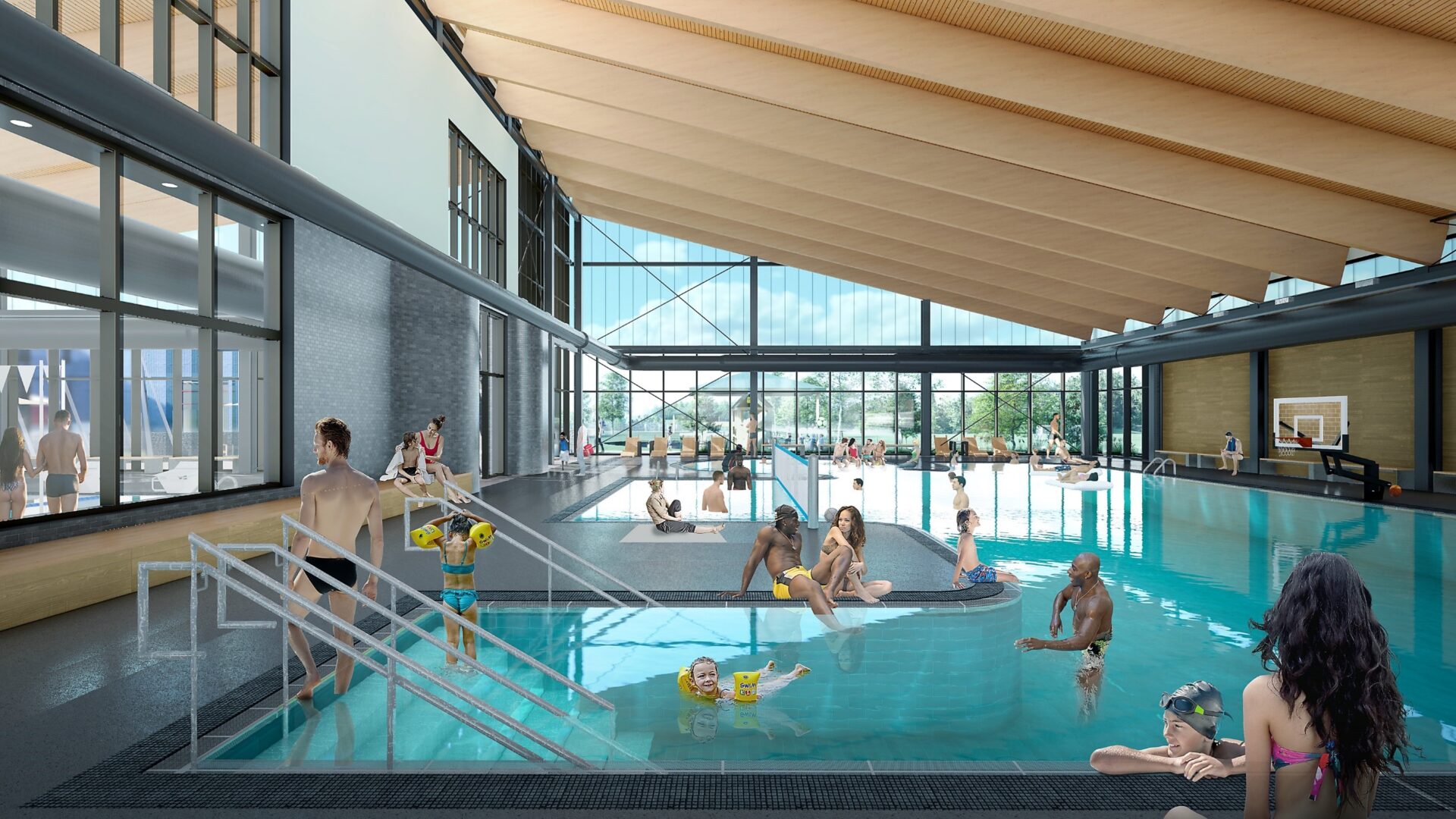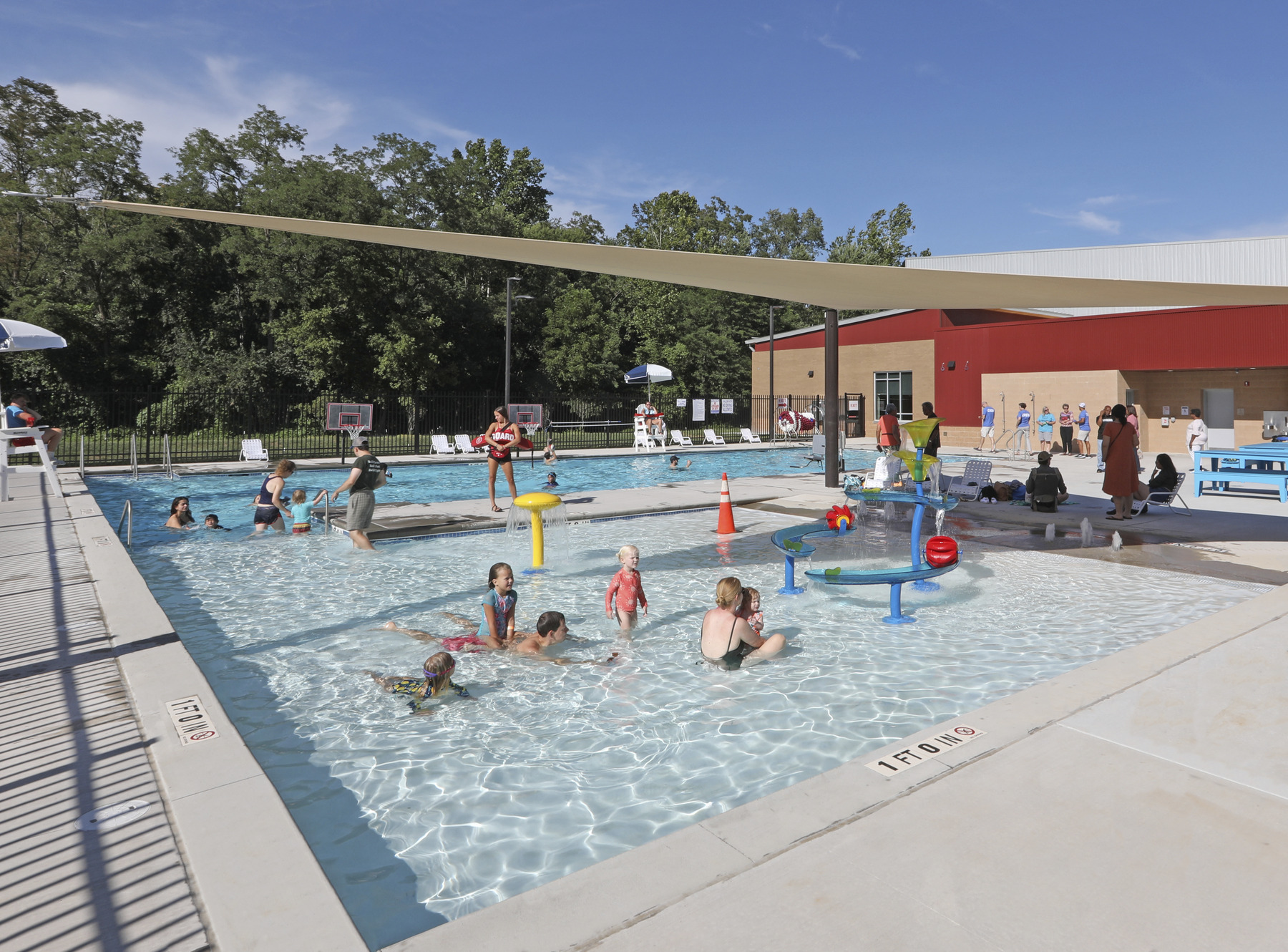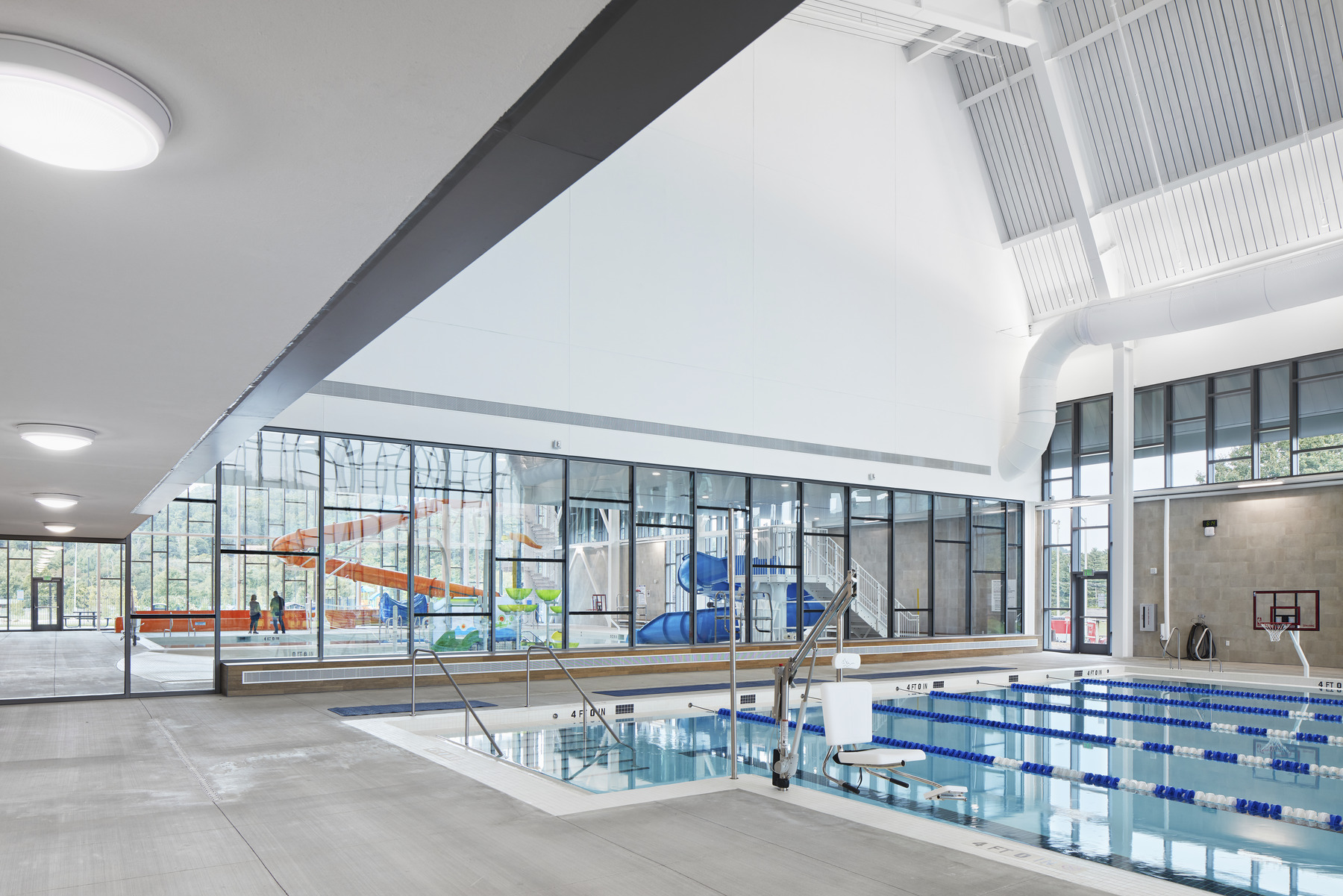More than Recreation: How Pools Can Positively Affect Communities
 As pools become more popular, it is important to understand the wide range of physical, mental, and recreational benefits that aquatic spaces offer. In the following, Clark Nexsen senior architects Jennifer Heintz and Dorothea Schulz discuss how pools can create jobs, break down barriers, and create opportunities within communities.
As pools become more popular, it is important to understand the wide range of physical, mental, and recreational benefits that aquatic spaces offer. In the following, Clark Nexsen senior architects Jennifer Heintz and Dorothea Schulz discuss how pools can create jobs, break down barriers, and create opportunities within communities.
Pools have become essential components of communities worldwide, offering a means for individuals to unite, unwind, and enjoy themselves. When designing aquatic spaces, it is integral to collaborate with the community and analyze the project requirements to execute the common goal. While some clients understand the local communities’ needs, others may require a more tailored approach. In the case of the Dr. Wesley Grant Southside Rec Center, the building is in a historically Black neighborhood impacted by redlining. For the local community, close collaboration with the city, planners, and Clark Nexsen gave them a voice and allowed them to identify the unique needs of their historic neighborhood.
There are several considerations clients need to think about when planning for a pool, such as the budget for the pool, the amount of water surface available, and the chemical(s) to treat the pool. These factors are not only integral to creating aquatic spaces but are also important to solve at the beginning of the project to prevent issues later in the design process. Additionally, when considering a project for a client, it is crucial to emphasize the importance of effectively separating the different wet and dry environments. For instance, careful consideration should be given to the placement of locker rooms, as they will naturally have more water exposure compared to locker rooms near the gym, even if both areas include shower facilities.

The pool at the Dr. Wesley Grant Southside Rec Center now provides the local community with more space, a safe environment for children and adults, and new engagement opportunities.
Community Benefits
Having an aquatic space within a recreation center offers several notable advantages. Firstly, it provides the community with additional space to explore and discover new hobbies. Moreover, it serves as a platform for swimming lessons and drowning prevention education, which are crucial skills for personal safety. Also, the pool provides a safe environment where a lifeguard is often visible. The pool offers a controlled setting with appropriate water depths, making it an ideal space where children and adults can benefit from swimming lessons. The very presence of an aquatics center can create employment opportunities for community members, particularly during the summer season, which not only stimulates the local economy but also encourages community engagement. Additionally, these centers often become the focal point for local schools and aquatics organizations needing a place to host training sessions and swimming meets.

The Watauga County Community Recreation Center offers various entry options, such as a pool ladder and a pool lift, to increase accessibility for its members.
Aquatic Inclusivity and Accessibility
Lastly, inclusive and accessible pools are essential for every community. Features such as zero entry and wheelchair access have the potential to break down demographic and physical barriers in a community. For example, the Watauga County Community Recreation Center provides multiple avenues of pool entry, such as a traditional pool ladder, gradual step entry, and a pool lift. Minimal barriers to its aquatics center have enabled all of Watauga County’s Rec Center members to enjoy aquatics activities. An aquatics space is also more accessible for older populations, such as seniors. According to American Senior Communities, water exercises like swimming are ideal for older adults because they are a total body workout, low impact, and present little risk of injury. These health benefits are unique to aquatic centers and complement other components of a recreation center, providing the community with a dedicated space to exercise, socialize, and enhance their overall well-being.
Community centers with pools can reestablish a sense of community and become a focal point for social interactions, contributing to the overall healing and growth of the community. The benefits extend well beyond physical healing as they can reintroduce a sense of community for the residents around it. Places like the Dr. Wesley Grant Southside Rec Center and Watauga County Community Recreation Center stand as a cornerstone of their neighborhoods, poised to flourish and positively shape the future for years to come. The social commitment and impact these centers represent is a symbol of hope, healing, and community progress.
Cover photo: Aquatics Addition, Jackson County Recreation Center.
Jennifer Heintz, AIA, LEED AP, is a senior architect and principal with Clark Nexsen. Over her 24-year career, she has focused on public facility design including higher education, K-12 education, and community buildings. To speak with Jennifer, please email jennifer.heintz@clarknexsen.com or call 919.576.2121.
Dorothea Schulz, AIA, LEED AP BD+C, is a senior architect with extensive experience designing projects for our community, educational, and commercial markets. To speak with Dorothea, please email dschulz@clarknexsen.com or call 828.333.9380.